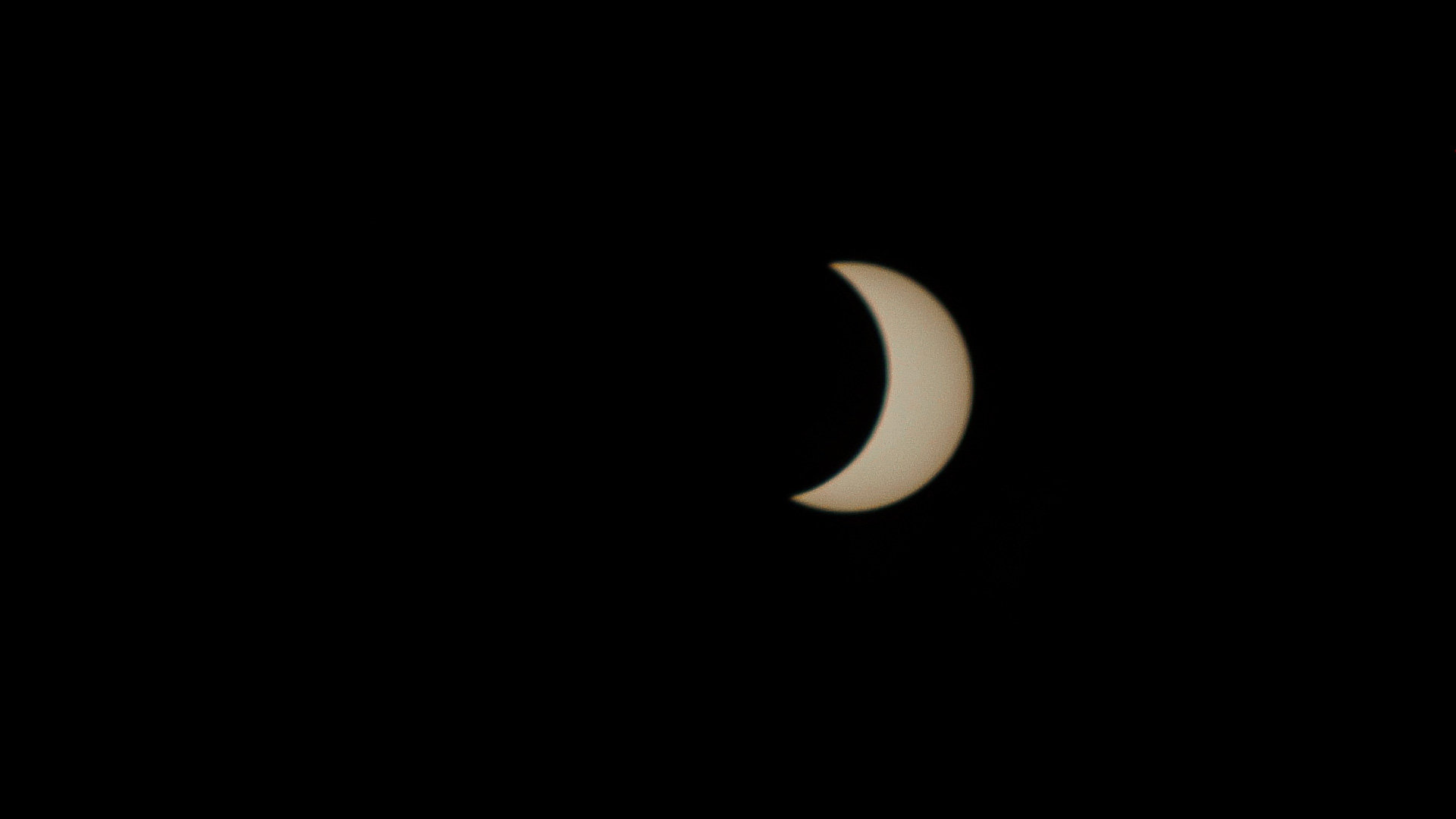 A photo of the solar eclipse from August 2017, taken on the University of Arizona campus.
A photo of the solar eclipse from August 2017, taken on the University of Arizona campus.
Astronomers recommend stepping outside this Saturday morning to catch a glimpse of one of the best partial solar eclipses Arizona will see this century.
The 2023 partial annular solar eclipse will peak at 9:33 a.m. in Tucson. Around 85% of the sun will be obscured by the moon here in Southern Arizona, which scientists say won’t be seen in this region again until 2071. The last eclipse of this magnitude was in 2017.
“Annular” is a technical term for ring-shaped, which is accurate given that those living in the direct path of the eclipse will be able to see the unique halo that distinguishes this type of eclipse.
Since the moon is close to its furthest distance from the Earth, the moon does not appear to cover the entirety of the Sun’s disk.
“It'll appear as a ring around the black center where the moon is,” Professor Steve Kortenkamp of the University of Arizona’s Lunar and Planetary Laboratory said.
The lucky Northwestern corner of Arizona is included in its path of totality and will be able to witness the full effect.
Kortenkamp said the difference between a total solar eclipse and an annular solar eclipse has to do with the position of the moon in its orbit around the Earth.
During a total solar eclipse, the sun is completely blocked by the moon. But significant sunlight will still pass through during this week’s annular eclipse, and Kortenkamp said it’s especially important to use eye protection when looking at the sky.
The University of Arizona’s Flandrau Planetarium is holding a free eclipse viewing on Saturday on the UA Mall. Safe viewing glasses will be available, as well as a livestream of the eclipse within the dome of the planetarium.
Kortenkamp says sky enthusiasts have another event to look forward to next spring. A total solar eclipse will be visible in a large swath of the eastern United States next April.

By submitting your comments, you hereby give AZPM the right to post your comments and potentially use them in any other form of media operated by this institution.